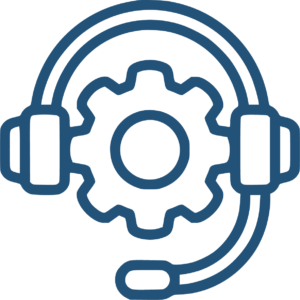
1. Not Selecting the Correct Scale Range
One of the most frequent mistakes is misadjusting the vertical (voltage) and horizontal (time) scales of the oscilloscope. Using an incorrect scale can make the signal appear too large or too small, preventing proper analysis.
How to avoid it: Start with a broader scale and then adjust for a clearer view. If you’re unsure how to do this, models available at Logicbus come with auto-adjustment features that simplify the process.
2. Improper Probe Connection
Incorrectly connecting the oscilloscope probes can result in distorted readings or noise interference, leading to unreliable data.
How to avoid it: Ensure that you connect the probes properly to the measurement points and use a good ground connection. At Logicbus, you can also find high-quality probes that improve accuracy and reduce noise in your measurements.
3. Not Using Probe Compensation
Another common mistake is failing to calibrate the probe with the oscilloscope before starting measurements. Poorly compensated probes can produce distorted signals, affecting waveform interpretation.
How to avoid it: Always adjust the probe compensation before measuring. Logicbus oscilloscopes include easy-to-follow tutorials and guides for properly setting up the compensation.
4. Forgetting the Ground Connection
Not connecting the probe to the ground can result in excessive noise or incorrect readings, especially when measuring sensitive signals.
How to avoid it: Make sure to connect the ground probe to the signal reference point. The oscilloscopes you’ll find at Logicbus are designed to minimize these issues with high-sensitivity configurations.
5. Incorrect Time Base Settings
An incorrect adjustment of the time base can make the signal difficult to read, as it may appear compressed or expanded inappropriately.
How to avoid it: Adjust the time base so the signal is properly displayed on the screen. If you’re unsure how to do this, the oscilloscopes at Logicbus have automatic functions to optimize the time base setting.
6. Not Using the Auto-Set Feature
Many modern oscilloscopes include an auto-set feature that optimizes parameters automatically, but many users do not use it due to a lack of awareness.
How to avoid it: Use this feature when you’re unfamiliar with the signals. Logicbus oscilloscopes come with this functionality for quick and easy setup.
7. Ignoring Oscilloscope Bandwidth
A major mistake is not considering the oscilloscope’s bandwidth when measuring high-frequency signals. If the device’s bandwidth is insufficient, the signal will be distorted.
How to avoid it: Ensure that the oscilloscope’s bandwidth is at least five times greater than the frequency of the signal you’re measuring. At Logicbus, you’ll find a wide variety of oscilloscopes with different bandwidths to meet all your needs.
8. Not Utilizing Advanced Functions
Modern oscilloscopes include advanced tools like FFT analysis or automatic measurements, but many users don’t take advantage of them, limiting the potential of the equipment.
How to avoid it: Make the most of advanced functions such as spectrum analysis or digital filtering. At Logicbus, you can get oscilloscopes with these features, as well as expert advice to help you make the most of them.
Conclusion
Oscilloscopes are powerful tools, but proper use is crucial for obtaining precise and reliable measurements. Avoiding common mistakes will help you improve the efficiency and accuracy of your work. If you’re looking for a quality oscilloscope that suits your needs, Logicbus offers a wide selection of oscilloscopes, accessories, and technical support to help you optimize and make the best use of these devices.
sales@logicbus.com | support@logicbus.com | +1 619 616 7350 | Start conversation





